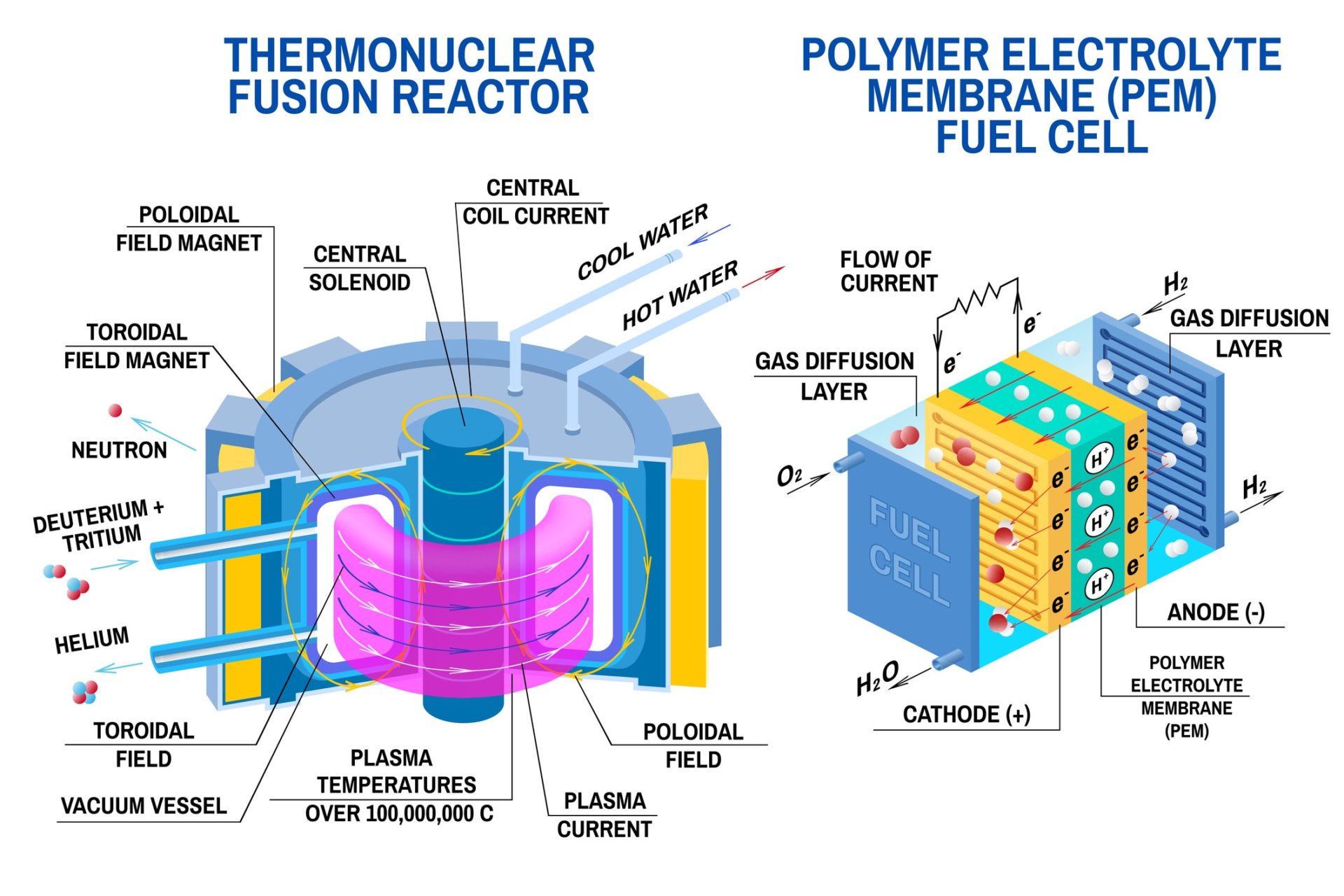
.png)
As a result, most of the neutrons are captured and the nuclear reaction stops. In the event of a problem, all the control rods are lowered into the cylindrical holes. We must not overdo it if we want to avoid big trouble. This allows the neutrons released by fission to hit other uranium atoms, propagating the chain reaction. Viceversa, when we want to increase the reactor’s temperature, we simply lift the control rods out. In this way, they absorb more neutrons produced by the uranium nuclei undergoing fission, preventing them from hitting other uranium nuclei. When we want to lower the temperature of the reactor, we slide the control rods into the core. Each pellet is a small cylinder about the diameter of a coin and 2-3 cm high. Some of them consist of a bundle of smaller cylinders where individual uranium pellets are aligned. It is made up of a number of cylinder holes into which bars are fitted. In a nuclear reactor, there is a container called core, which is used to heat water. The rotor is set into rotation, the variable magnetic field generates an electric field, which in turn moves electrical charges through the wires, producing electrical energy.
#Nuclear fission generator series#
A turbine is basically a rotor attached to a series of magnets and conducting wires and surrounded by other fixed magnets. To harness the energy contained in Uranium, a nuclear reactor is used which, from a certain point of view, is designed according to the usual paradigm of energy production technologies: the heat produced by either uranium fission or coal combustion is used to heat water in a boiler and generate high pressure steam. In order to harness the energy contained in coal, it is burnt in thermal power plants, which also produces a lot of pollution in the extraction, transport, combustion and disposal of the smoke and ash. The precise value depends on many technical factors, but in essence, for the same weight, between three hundred thousand and three million times more nuclear energy is released from the fission of a given mass of uranium than is released - in the form of chemical bonding energy - by burning an equal mass of coal. One gram of uranium containing only 3% 235U can generate energy equivalent to that produced by burning 300 to 3,000 kg of coal. The fission of a single atom of 235U releases 202 million electronvolts (a unit used in electromagnetism and chemistry to measure the work done by an electron to cross a potential difference of 1 volt). It can only be stopped if we find a way to catch more stray neutrons than are formed and prevent them from hitting and breaking other 235U atoms. But that's not all: if there are many other 235U atoms surrounding the one that broke, the three neutrons produced by its fission can hit them and break them each of them will release three neutrons that in turn. The overcoming of the strong fundamental forces holding the two Barium and Krypton nuclei and the three neutrons together also releases a lot of energy in the form of kinetic energy. There are three neutrons missing, which have in fact broken away and shot off as three independent particles. But if we add up their total mass, we see that it comes to 141+92=233. That makes a total of 92 and the proton count adds up. This process is called fission.īarium and Krypton have 36 and 56 protons respectively. It is still Uranium, because we already know that when you change the number of neutrons in an atom you do not change its nature, but the nucleus itself is no longer 235U: it becomes 236U, which reminds us that there is an extra neutron in it.Ģ36U, however, is terribly unstable: as soon as it forms, it falls apart, giving rise to a Barium 141Ba atom and a Krypton 92Kr atom. When the 235U atom is hit by a neutron with appropriate kinetic energy, a new isotope is formed.

This isotope, remember, has its 92 protons, like all uranium atoms, but has "only" 235-92=143 neutrons. To achieve this, we must choose an isotope of an atom for example, the heaviest available on Earth, 235U. Nuclear fission occurs when a heavy nucleus breaks up and is split into two lighter ones, whose masses (when added together) are less than the original mass. In terms of spelling there is only a different vowel and a consonant between them, but in reality these are two exactly opposite reactions in the atom.


 0 kommentar(er)
0 kommentar(er)
